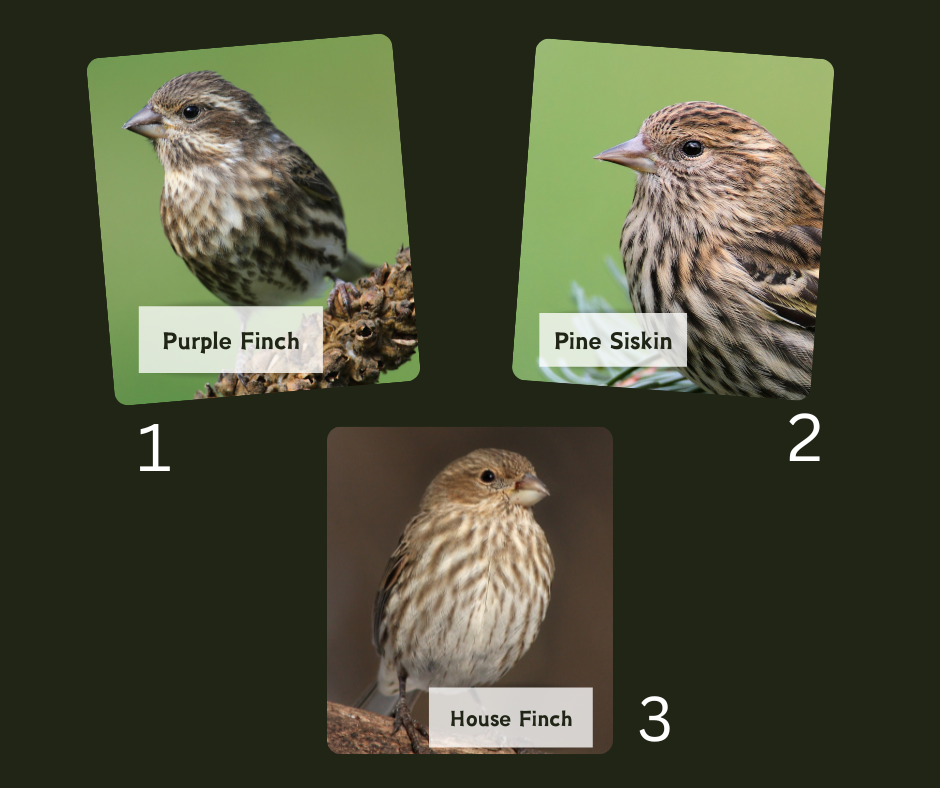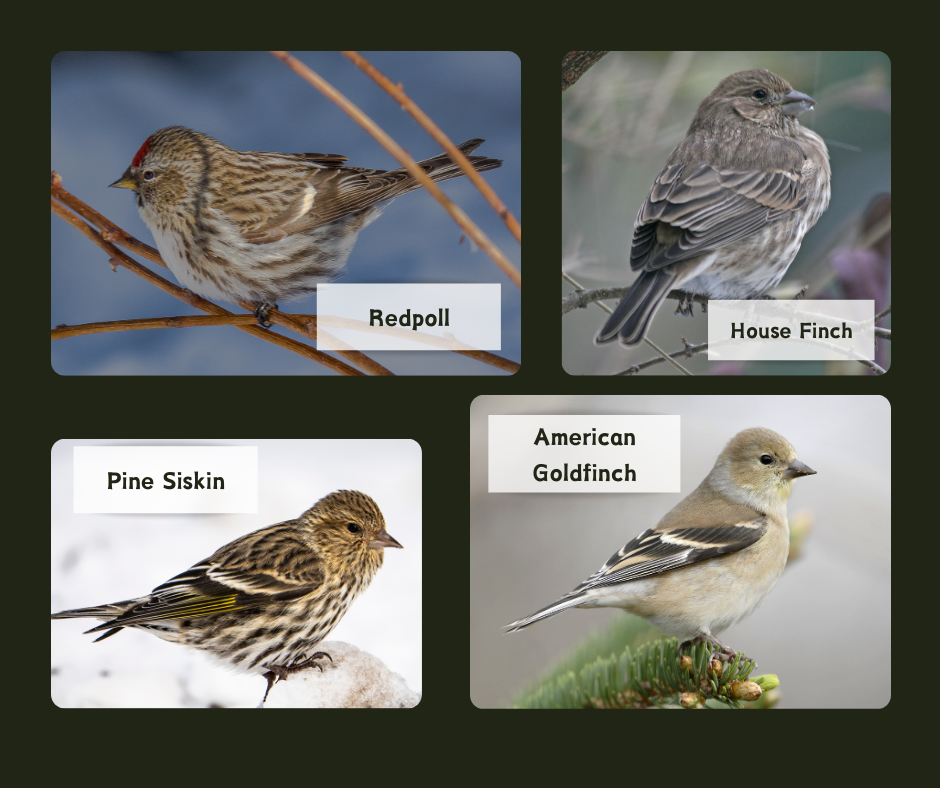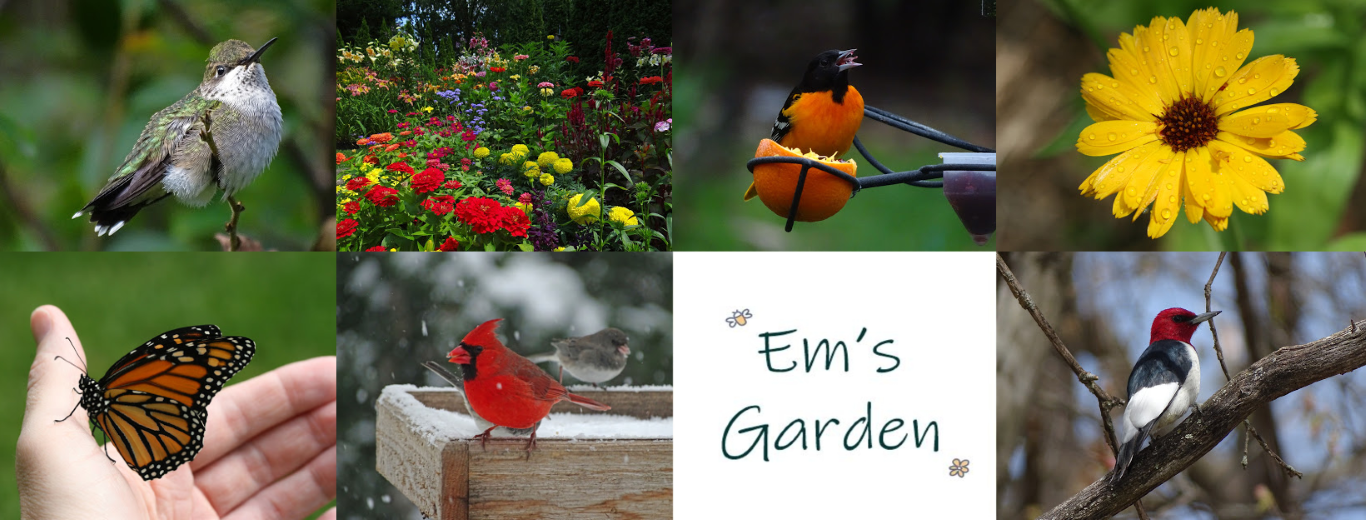I’ve been watching birds for decades now, but identifying finches can still trip me up.
Here are three similar-looking finch species that visit backyard feeders in North America.
Can you identify them?
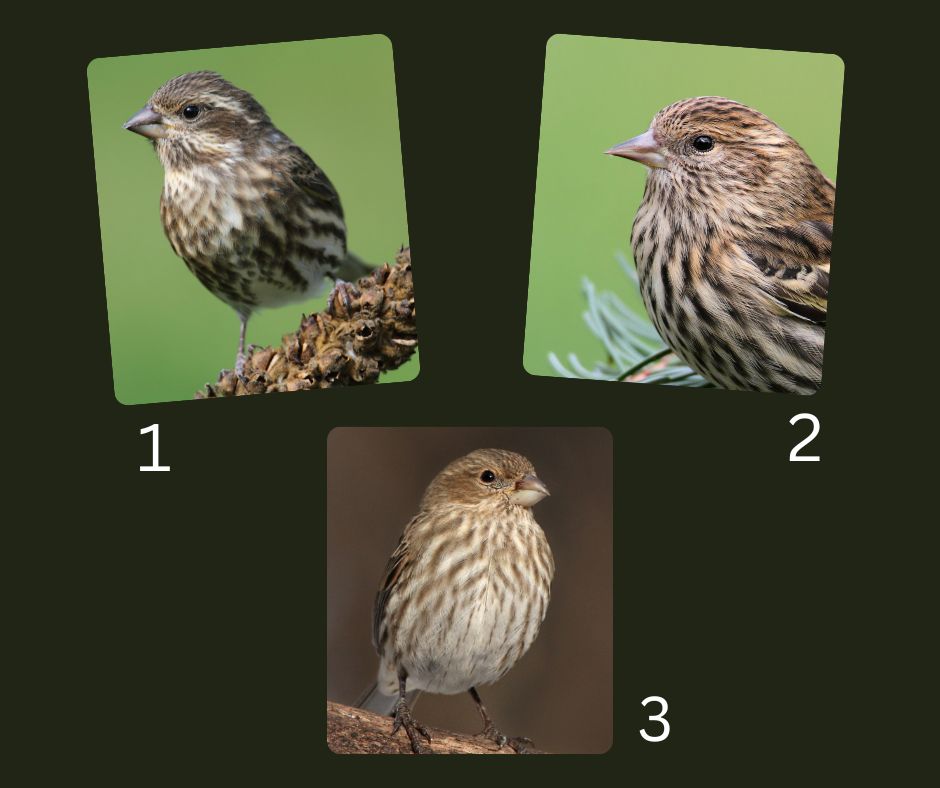
All three species are about the same length (4.5 to 6 inches), and have brown streaks on their bellies.
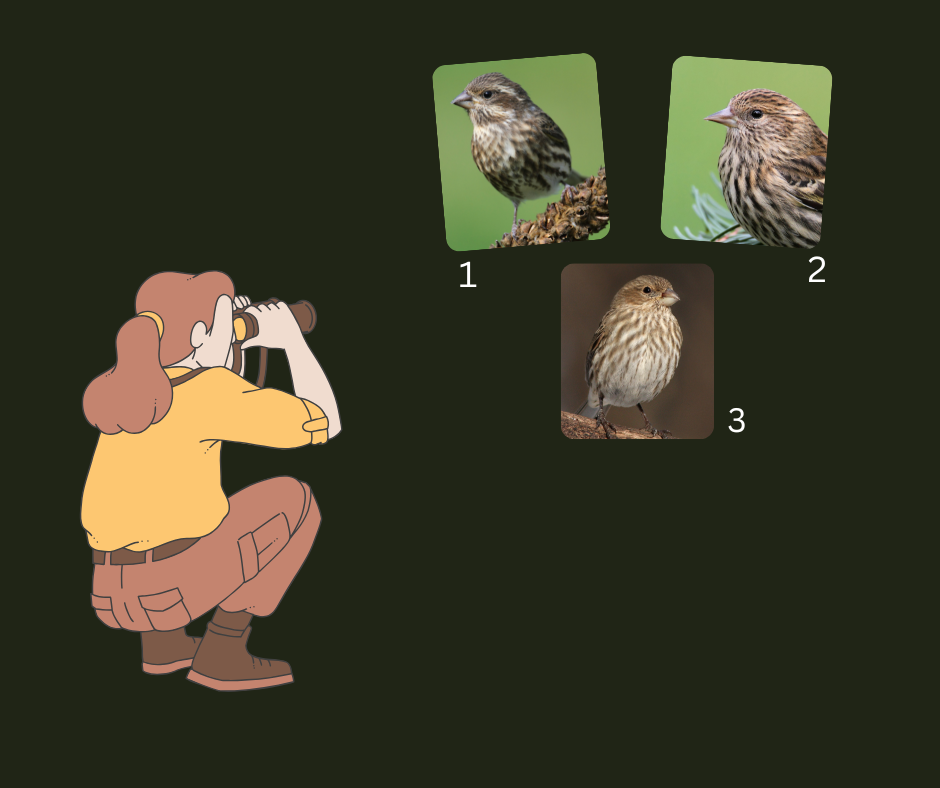
The easiest way to start ruling out possibilities is to look more closely at their bills. Notice that two have conical bills (1 and 3) and one has a pointy bill (2)?
And if you get a chance to see Bird #2 from the side, you’ll also notice some yellow that will help you distinguish it from the other two species.

The bird with the pointy bill (#2) is a Pine Siskin. That pointy bill is used to glean seeds from trees, shrubs and plants. At backyard feeders, these birds prefer to eat shelled sunflower seeds and Nyger seeds.
That leaves two other finches to ID. Hint: both are females!
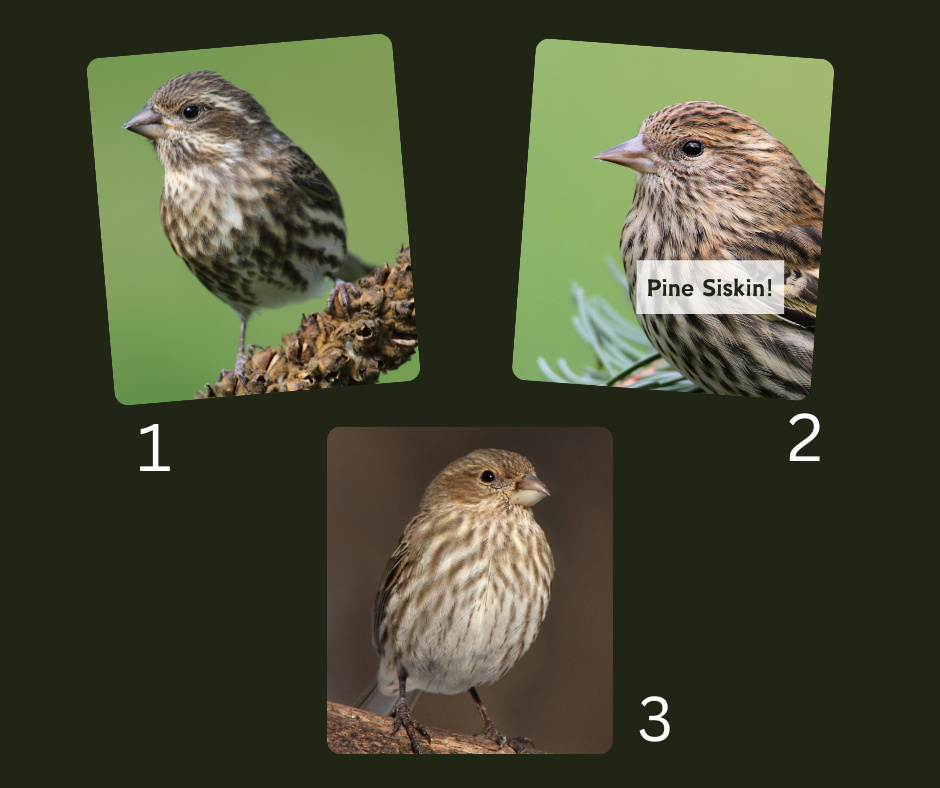
Here are some other differences to notice:
- One bird has distinctive brown and white markings while the other bird’s markings are more fuzzy or blurry
- One has a white eyebrow
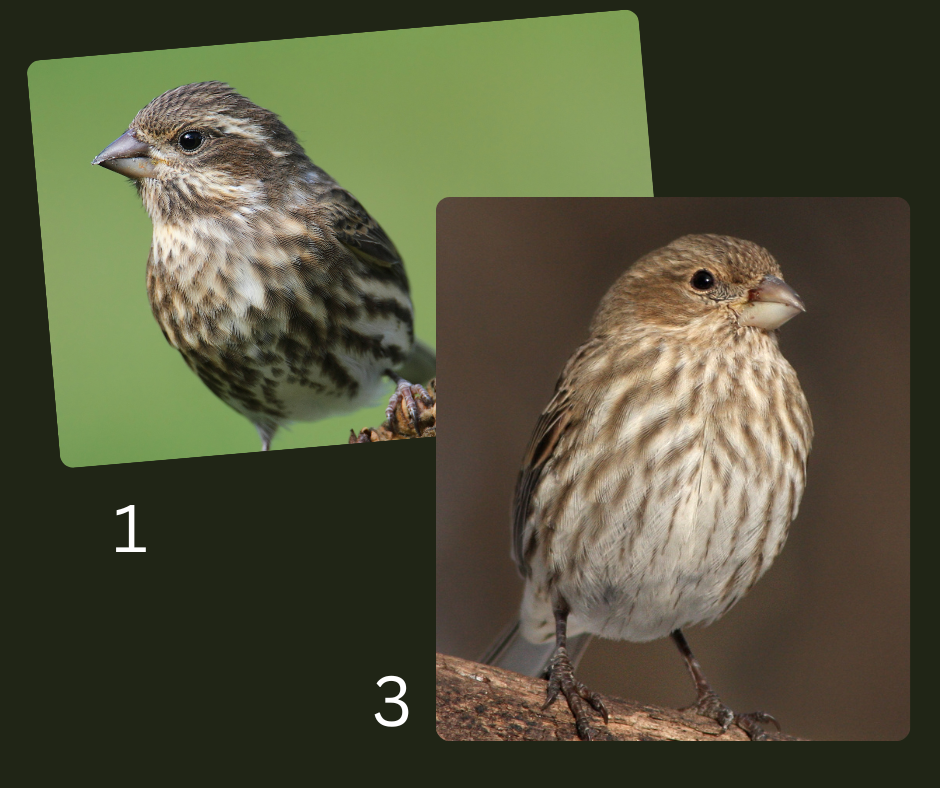
The bird with the white eyebrow (#1) is a female Purple Finch. The bird with the blurry streaks (#3) is a female House Finch.
Both of these species eat seeds, buds and fruit and will visit birdfeeders for sunflowers, safflower and Nyjer.
Let’s make things more interesting. Do you recognize these finches?
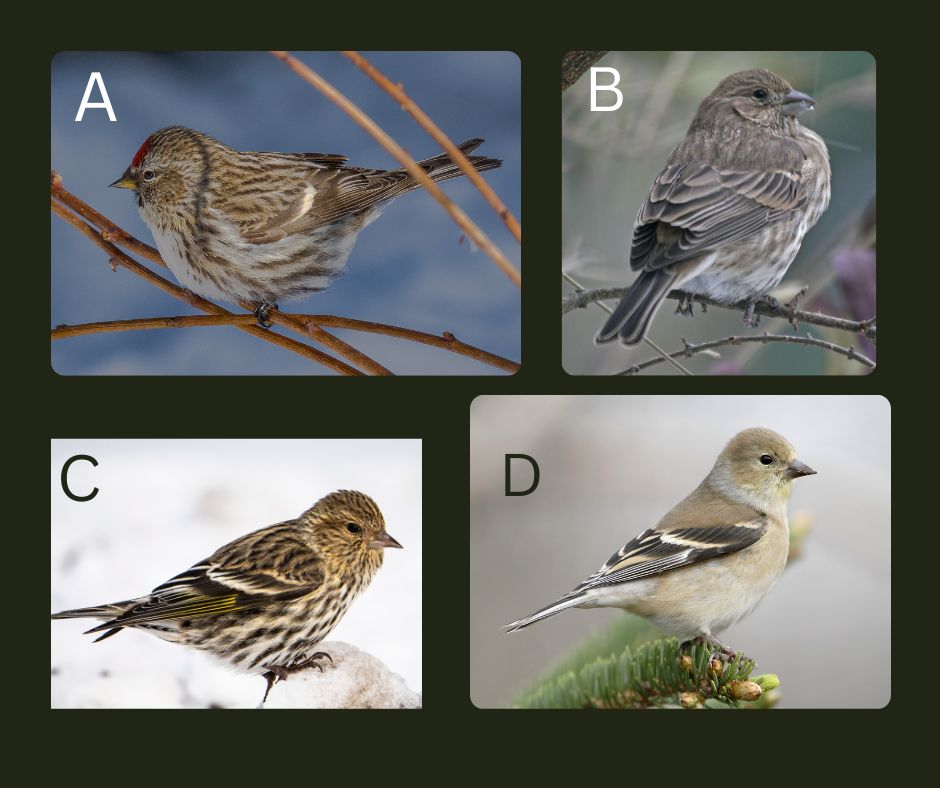
I included two species we just identified and added two more finch species that visit backyard feeders in North America.
Do finches give you a headache yet?
You’ll notice that three of these birds have pointy bills and one has a conical bill.
We just learned about two species that have conical bills. What else do you notice about Bird B? Its streaks are fuzzy and it has no white eyebrow. That means it’s a……female House Finch!

Now you’re left with 3 pointy-billed finches. Birds C and D are the same size and often visit feeders at the same time. But only one has streaks.
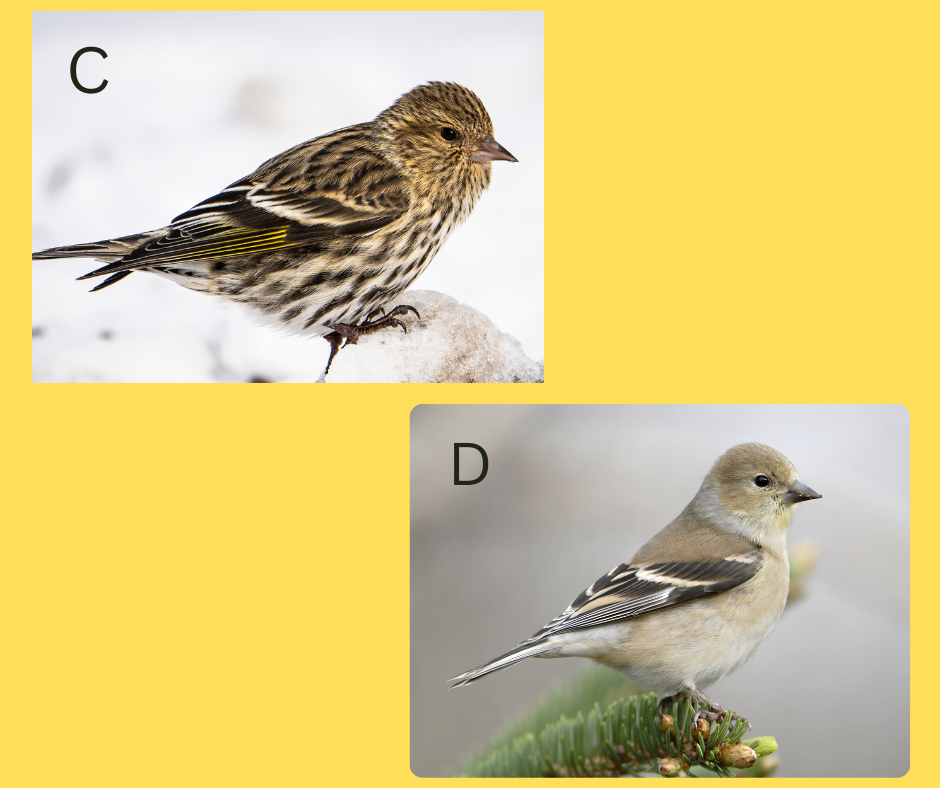
Notice the hint of yellow on Bird C’s wings. That makes it a….Pine Siskin. Bird D is a female American Goldfinch.
Bird A can be hard to ID from a distance—especially the females which can look like a Pine Siskin (or a female Purple Finch— but remember that species has a conical bill).
But with a closer look you’ll see that this female finch has a noticeable patch of red on her forehead:
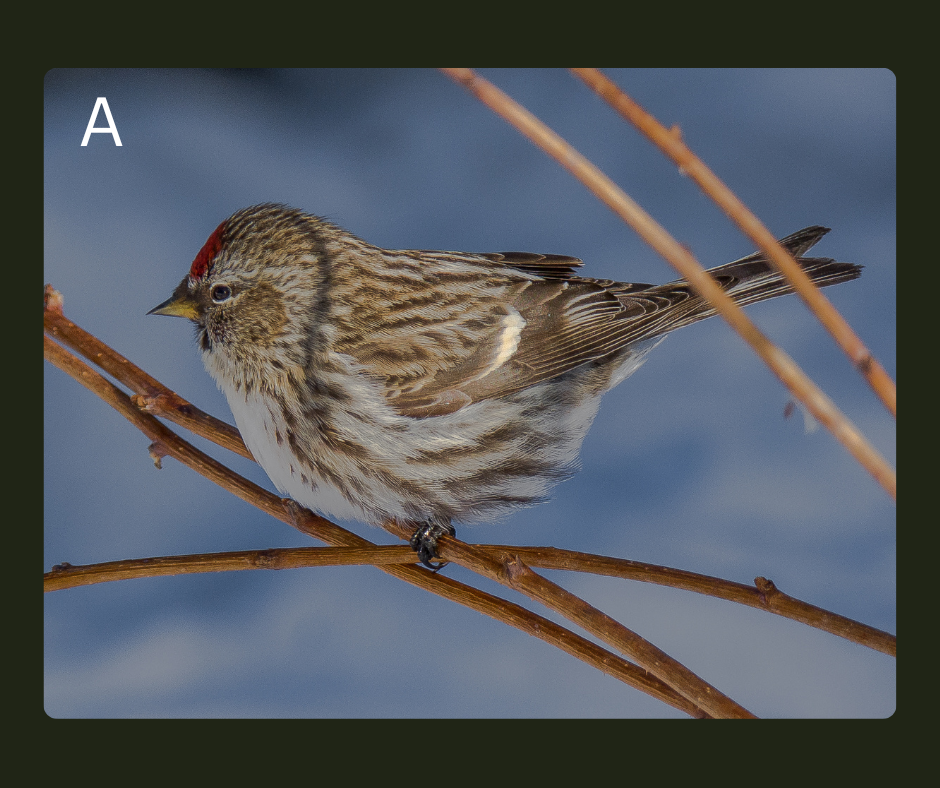
Bird A is a Redpoll. Up until 2024 it would’ve been called a Common Redpoll, but this species is genetically identical to the the Hoary Redpoll and Lesser Redpoll. All three are now just called “Redpolls.”
Redpolls visit southern Wisconsin during some winters depending on food supplies further north. At feeders they prefer sunflowers, safflower and Nyjer seed.
Here’s a fun fact about Redpolls from the Cornell Lab of Ornithology: “During winter, some Redpolls tunnel into the snow to stay warm during the night. Tunnels may be more than a foot long and 4 inches under the insulating snow.”
The next time you see little brown finches in your backyard, take a closer look and use these identification tips to note their differences. You might be surprised to learn how many different finch species are visiting your backyard!
